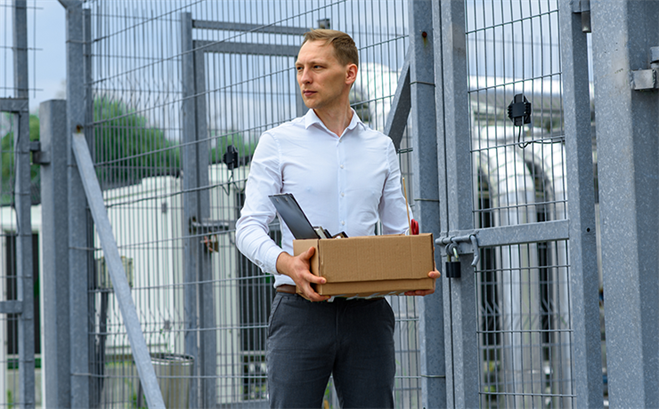Can recidivism be solved with technology?
August 19, 2022 by Peter Friesen

Giving people opportunities as they return to society after time in jail or prison sounds like it could be simple. But consider how many pieces there are to contend with: housing, banking, mental health resources, and employment top the list. Finding work requires access to job postings, applications, resume writing, and interviewing, ideally done from correctional facilities.
The U.S. leads industrialized countries in recidivism, with over 66% of incarcerated individuals re-arrested within three years of leaving jail or prison. That number rises to 80% when expanded to six years.
Silas Deane III, an early innovator in jail solutions, is now the general manager of corrections solutions at Tyler Technologies. He believes a large part of that recidivism rate stems from a lack of resources to help people reacclimate as they leave a facility. But these resources can be offered in a single package that streamlines facility operations and eases resident transitions.
Providing More Opportunity
Deane began visiting jails and state prisons to install operations software for his family company and would see firsthand the lack of resources for offenders. One sheriff told him they didn’t provide help or job leads, just a bus ticket to the nearest big city. Another, “better” jail, simply listed a pizza chain as the single option for a job, no contact or application information, nor interview help provided.
"It starts begging the question: How do you expect these people to change? And the answer is they don't,” Deane says. “[Administrators] expect them to come right back into that facility; and if you are somebody who's incarcerated, how are you going to change if there's no opportunity for you?”
Deane saw a way to expand the software he was installing to include more resources for residents, providing options to help set themselves up for success after leaving jail or prison.
Back to Square One
There are many ways people fall behind society after time in jail. It’s hard to get a job, or open a bank account, or obtain a valid government ID. Buying adequate clothes or finding transportation to work are other hurdles. Pair this with a potential lack of education, or a long sentence that increases the improbability for a healthy return to society, and it’s not even back to square one, Deane says, but behind that.
The first offering was a solution to track and hold money from family or other outside groups for residents to use inside or save for release. The software then expanded, offering messages to be sent from family or friends. Residents could sign up for interviews or reintroduction programs, and track jobs as well.
“My whole mission and goal is to provide actual services and opportunities to incarcerated people that do not exploit them, but rather set them up for success post-incarceration,” Deane says. “Our entire focus is how much good can we provide to the individual.”
Changing the Culture of Incarceration
After a jail or prison adopts the software, it allows incarcerated people themselves to use a kiosk preloaded with the resource solution. The kiosk has information on transitional homes, mental health support, or other support programs that can be attended in prison or after release.
Job resources include job listings, applications, virtual interviews, and messaging with employers, ensuring dedicated residents are set up with a good landing spot immediately upon release.
“We’re trying to really change the culture of incarceration in America,” Deane says. “[To] really shift it from a cycle of recidivism to a system of rehabilitation.”